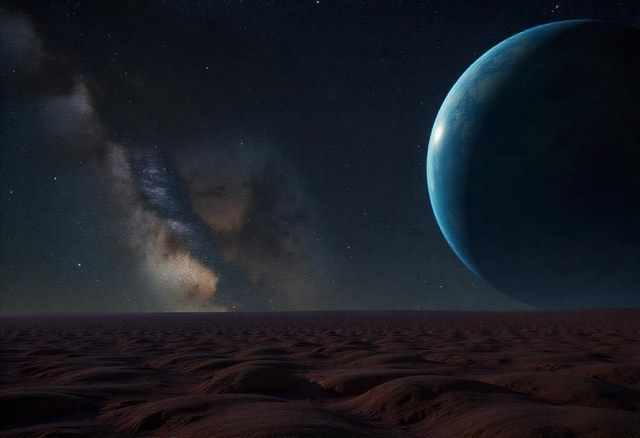The best candidate for planet nine
The best candidate for planet nine

Instead of being called the search for planet number nine, it should be called the search for an explanation for the alterations in the orbits of objects that are beyond Neptune or trans-Neptunian objects. By trans-Neptunian objects I mean dwarf planets and billions of inactive comets, inactive comets that visually if we were close to them would seem like asteroids but they are basically made up of ice of various elements, frozen elements and also some rocks and some dust, but basically frozen items.

But between the Kuiper belt and the Oort cloud there is a void where no objects are found. In recent years, theories have emerged that say it could be that there is a planet there that has cleared that void between the Kuiper belt and the Oort cloud. There are several anomalies that would need to be explained. There are several theories apart from planet number nine. One would be the existence of a primordial black hole. A primordial black hole is a theoretical object that we have not yet found. It also has some very strange characteristics.

Other astronomers defend that these anomalies in the orbits of these trans-Neptunian objects are due to the passage near the solar system of other stars, stars that passed nearby in the past and that lately we are beginning to see that it was not as abnormal as was believed in the last century, and it is not so impossible because of what we are discovering lately, for example, the next star that is coming towards the solar system is Gliese 710, currently it is about 20 light years away, but within 1,300,000 years will be just one light year away.

The most popular theory among astronomers is that all these anomalies are due to the existence of a planet that altered the orbits of these objects and that peacefully orbits the sun, but very far away, they call that planet planet number nine. The main theory is that planet 9, if it exists, could not form together with the rest of the planets but that in the initial chaos of the formation of the solar system it was expelled to an orbit very far from the sun, it would also be possible that it had been captured.
The images without reference were created with AI
Thank you for visiting my blog. If you like posts about #science, #planet, #politics, #rights #crypto, #traveling and discovering secrets and beauties of the #universe, feel free to Follow me as these are the topics I write about the most. Have a wonderful day and stay on this great platform :) :)